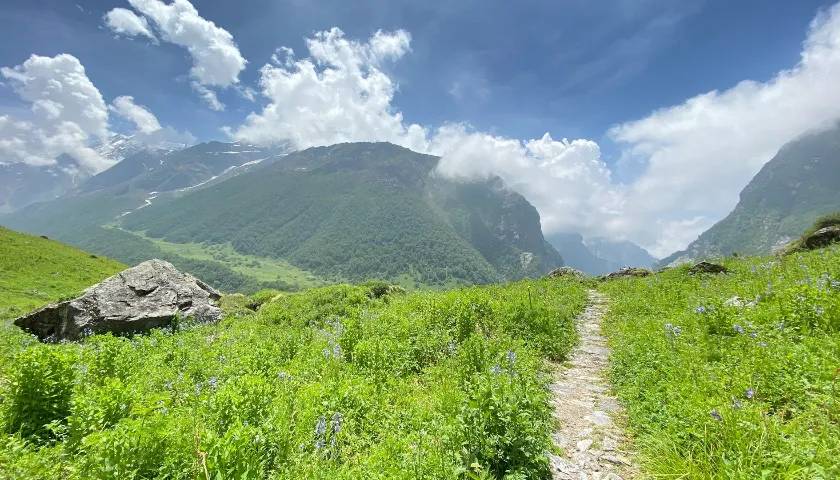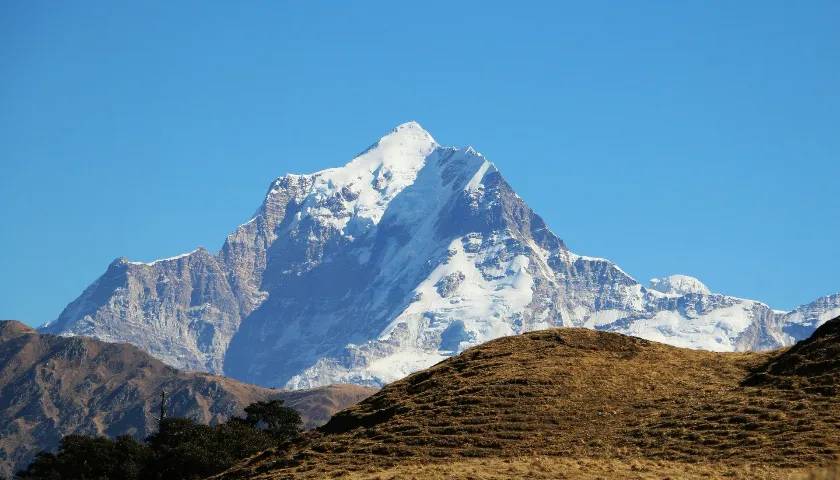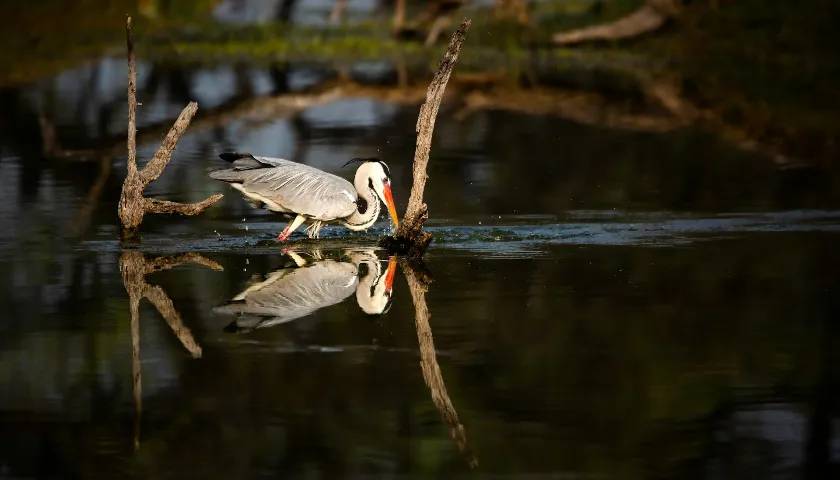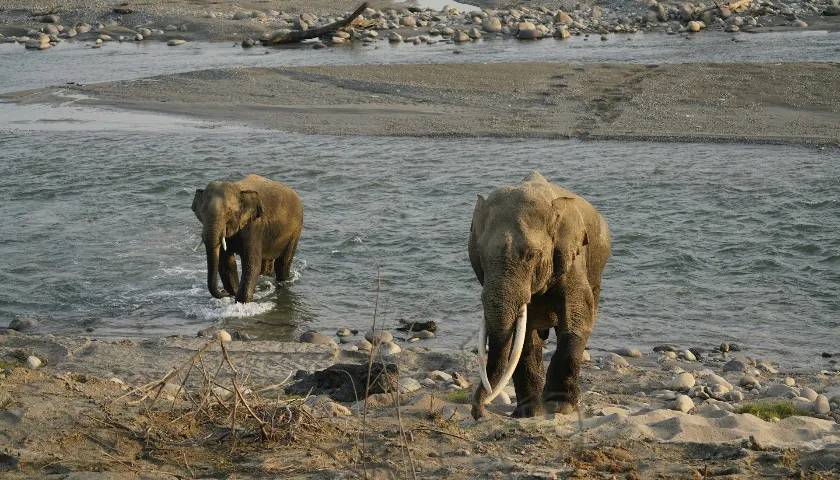North India is a haven for nature lovers and wildlife enthusiasts, offering some of the most spectacular national parks in the country. These protected areas are home to a rich diversity of flora and fauna, ranging from dense forests and sweeping valleys to serene lakes and majestic mountains. Each national park provides a unique and immersive experience, where visitors can witness rare and endangered species in their natural habitats. Whether you seek thrilling wildlife encounters or peaceful retreats in nature, the national parks of North India cater to all kinds of nature adventurers.
Embarking on a journey through these pristine landscapes promises unforgettable experiences and breathtaking vistas. The 10 Best National Parks in North India guide will take you through the top parks in the Northern region of India, revealing the hidden gems and natural wonders that make each park special. Get ready to explore, discover, and be inspired as you delve into the heart of North India's wild and untouched beauty. Plan your next adventure and uncover the secrets of these remarkable natural sanctuaries.
10. Rajaji National Park, Uttarakhand
Rajaji National Park, located in the Shivalik range of the Himalayas in Uttarakhand, spans 820 square kilometers and is known for its diverse ecosystems and rich wildlife. The park features a mix of tropical and subtropical forests, grasslands, and riverine habitats, providing a sanctuary for a variety of flora and fauna. Rajaji is part of the larger Rajaji Tiger Reserve and is named after the freedom fighter and statesman C. Rajagopalachari.
The park is home to a significant population of Asian elephants, as well as tigers, leopards, and a variety of herbivores such as deer and antelope. Rajaji's rich avifauna includes over 300 species of birds, making it a popular destination for birdwatchers. The park's diverse landscapes and well-maintained trails offer excellent opportunities for wildlife safaris, nature walks, and birdwatching tours. Rajaji National Park, with its rich biodiversity and scenic beauty, provides a serene and captivating wildlife experience.
9. Valley of Flowers National Park, Uttarakhand

Valley of Flowers National Park, nestled in the Western Himalayas of Uttarakhand, is a UNESCO World Heritage Site renowned for its stunning natural beauty and rich biodiversity. Spanning 87.5 square kilometers, the park is a high-altitude valley covered in a vibrant carpet of flowers during the summer months. The valley is surrounded by snow-capped peaks and dotted with cascading waterfalls, making it a paradise for nature lovers and photographers.
The park is home to over 500 species of flowering plants, including several rare and endemic species. The diverse flora attracts a variety of pollinators and wildlife, including the endangered Asiatic black bear, snow leopard, and musk deer. The park's well-marked trekking routes allow visitors to explore its breathtaking landscapes and rich biodiversity. The Valley of Flowers, with its stunning floral displays and pristine environment, offers a unique and unforgettable wilderness experience.
8. Nanda Devi National Park, Uttarakhand

Nanda Devi National Park, part of the Nanda Devi and Valley of Flowers National Parks UNESCO World Heritage Site, is a breathtaking wilderness area in the Garhwal Himalayas of Uttarakhand. Spanning 630 square kilometers, the park is dominated by the majestic Nanda Devi peak, India's second-highest mountain. The park's remote location and challenging terrain have helped preserve its pristine environment and rich biodiversity.
Nanda Devi National Park is home to a variety of high-altitude wildlife, including the elusive snow leopard, Himalayan black bear, and blue sheep. The park's diverse flora includes alpine meadows, rhododendron forests, and numerous endemic plant species. The park's challenging trekking routes offer spectacular views of the snow-clad peaks, deep valleys, and pristine landscapes. The park is also part of the larger Nanda Devi Biosphere Reserve, which aims to protect the region's unique ecological and cultural heritage.
7. Sariska Tiger Reserve, Rajasthan

Sariska Tiger Reserve, located in the Alwar district of Rajasthan, is a unique blend of historical significance and natural beauty. Spanning 866 square kilometers, the reserve is part of the Aravalli Range and features a diverse landscape of dry deciduous forests, grasslands, and rocky hills. The reserve is home to a growing population of Bengal tigers, which were successfully reintroduced after being declared extinct in the area in the early 2000s.
In addition to tigers, Sariska is home to a variety of wildlife, including leopards, striped hyenas, jackals, and numerous species of deer. The reserve's rich avifauna includes the Indian peafowl, golden-backed woodpecker, and crested serpent eagle. Sariska also houses several historical landmarks, including the ancient Kankwari Fort and the ruins of the medieval Neelkanth temples, adding a cultural dimension to the wildlife experience. The park's proximity to Delhi and Jaipur makes it a convenient and popular destination for wildlife enthusiasts and history buffs alike.
6. Dudhwa National Park, Uttar Pradesh

Dudhwa National Park, located in the Terai region of Uttar Pradesh, is a hidden gem that offers a unique blend of grasslands, swamps, and dense forests. Spanning 490 square kilometers, the park is part of the Dudhwa Tiger Reserve, which also includes the Kishanpur Wildlife Sanctuary and the Katarniaghat Wildlife Sanctuary. The park is renowned for its efforts in conserving the endangered Bengal tiger and the one-horned rhinoceros.
Dudhwa's diverse habitats support a wide range of wildlife, including swamp deer (barasingha), leopards, elephants, and a variety of reptiles and bird species. The park's wetlands are particularly important for migratory birds, making it a paradise for birdwatchers. The park also offers unique experiences such as elephant-back safaris and guided nature walks, allowing visitors to explore its rich biodiversity up close. The serene and less-crowded environment of Dudhwa makes it an ideal destination for those seeking a tranquil wildlife experience.
5. Great Himalayan National Park, Himachal Pradesh

The Great Himalayan National Park, located in the Kullu region of Himachal Pradesh, is a UNESCO World Heritage Site known for its pristine beauty and biodiversity. Spanning 1,171 square kilometers, the park encompasses a wide range of altitudes, from 1,700 to 6,000 meters, resulting in diverse habitats ranging from subtropical forests to alpine meadows and snow-capped peaks.
The park is home to a rich variety of flora and fauna, including over 375 species of fauna and numerous endemic plant species. Wildlife enthusiasts can spot elusive species such as the Western Tragopan, Himalayan brown bear, and the endangered snow leopard. The park's diverse landscapes and well-marked trekking routes make it a haven for trekkers and nature lovers. The serene environment, coupled with the park's rich biodiversity, offers a unique and immersive wilderness experience.
4. Keoladeo National Park, Rajasthan

Keoladeo National Park, also known as Bharatpur Bird Sanctuary, is a UNESCO World Heritage Site located in the Bharatpur district of Rajasthan. Covering an area of about 29 square kilometers, this park is one of the finest bird sanctuaries in the world, attracting ornithologists and birdwatchers from across the globe. Originally a royal hunting ground, it was declared a protected sanctuary in 1971 and later gained national park status in 1982.
The park is a crucial wintering ground for thousands of migratory birds, including the endangered Siberian crane. During the migratory season, the park comes alive with the sights and sounds of over 230 species of birds, including pelicans, herons, egrets, storks, and cranes. The diverse habitats within the park, such as wetlands, woodlands, and grasslands, support a wide variety of avifauna and other wildlife. Visitors can explore the park through well-maintained trails and enjoy boat rides that offer close encounters with the birdlife.
In addition to its avian inhabitants, Keoladeo National Park is home to several species of mammals, reptiles, and amphibians. The park's rich biodiversity includes animals such as deer, wild boar, and nilgai, as well as numerous species of snakes and turtles. The park's management focuses on maintaining the delicate balance of its wetland ecosystem, which is essential for the survival of its diverse wildlife. Keoladeo National Park's combination of historical significance, ecological importance, and breathtaking natural beauty makes it a must-visit destination for nature enthusiasts and bird lovers.
3. Hemis National Park, Ladakh

Hemis National Park, located in the cold desert region of Ladakh, is the largest national park in India, covering an area of 4,400 square kilometers. The park is renowned for its stunning high-altitude landscapes, including snow-capped peaks, deep gorges, and alpine meadows. Hemis is a haven for trekkers and adventure enthusiasts, offering some of the most challenging and scenic trekking routes in the Himalayas.
Hemis National Park is best known for its population of snow leopards, often called the "ghosts of the mountains" due to their elusive nature. The park is one of the few places in the world where you can embark on a snow leopard expedition. Besides snow leopards, the park is home to a variety of high-altitude wildlife, including Tibetan wolves, Eurasian brown bears, and blue sheep. The park's rich avifauna includes several species of raptors and high-altitude birds, making it a paradise for birdwatchers and wildlife photographers.
2. Ranthambore National Park, Rajasthan
Ranthambore National Park, located in the Sawai Madhopur district of Rajasthan, is one of India's most famous wildlife reserves. Spanning 1,334 square kilometers, the park is a perfect blend of history and natural beauty, with the ancient Ranthambore Fort standing majestically amidst the rugged terrain. The park's diverse landscapes, including dry deciduous forests, rocky ridges, and open grasslands, provide an ideal habitat for its star attraction – the Bengal tiger.
Ranthambore is renowned for its high tiger density, making tiger sightings relatively common compared to other parks. The park is also home to a variety of other wildlife, such as leopards, sloth bears, sambar deer, and marsh crocodiles. Birdwatchers will find Ranthambore equally fascinating, with over 300 species of birds recorded. The picturesque lakes and ancient ruins within the park add to its allure, offering visitors a unique blend of history and wildlife.
1. Jim Corbett National Park, Uttarakhand

Jim Corbett National Park, established in 1936, is India's oldest national park and a premier destination for wildlife lovers. Nestled in the foothills of the Himalayas, it spans over 520 square kilometers and boasts a variety of ecosystems, including grasslands, riverine belts, marshy depressions, and dense forests. The park is renowned for its population of Bengal tigers, and visitors often embark on thrilling jeep safaris and elephant rides in hopes of spotting these majestic predators.
Apart from tigers, Jim Corbett National Park is home to a rich diversity of fauna, including leopards, elephants, deer, and over 600 species of birds. The Ramganga River, which meanders through the park, supports a healthy population of fish and attracts numerous bird species, making it a paradise for birdwatchers. The park's diverse flora includes Sal forests, bamboo thickets, and a variety of flowering plants, adding to the scenic beauty and ecological significance of this historic wildlife sanctuary.
These 10 national parks in North India offer a diverse range of wildlife experiences and breathtaking landscapes. Whether you're a wildlife enthusiast, a birdwatcher, or simply seeking a tranquil escape into nature, these parks provide the perfect setting to explore and appreciate the natural beauty and rich biodiversity of the region.








